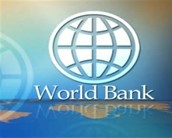WB projects inflation to remain at 6.7 percent in 2024

Kathmandu / April 03 : The consumer price inflation in Nepal is expected to remain high at 6.7 percent in Fiscal Year 2024, close to the central bank’s 6.5 percent ceiling, due to VAT exemptions removal, India’s food export restrictions, and increased paddy minimum support prices.
However, inflation is forecasted to decline to 6 percent in FY25 and 5.5 percent in FY26, driven by global commodity price moderation and domestic price containment through monetary policy. Projected lower inflation in India may also help reduce domestic inflation via the currency peg, mitigating imported inflation, the World Bank (WB) stated in its Nepal Development Update (April 2024) it unveiled on Tuesday.According to the WB, Nepal’s economic growth is set to rebound, from 1.9 percent in FY23 to a forecast 3.3 percent in FY24.
Growth is then projected to further accelerate to 5 percent on average, over FY25-26. This recovery is largely attributed to the easing of monetary policy, assuming productive use of private sector credit. Additionally, reforms to improve business environment could attract more private investment, further boosting medium-term growth prospects.
The services sector is expected to be the key driver of growth in the coming years. Accommodation and food services are poised to benefit significantly from the rise in tourist arrivals. The ongoing construction of new five-star hotels and government policies supporting real estate loans are expected to further stimulate the accommodation sub- sector.Meanwhile, the industrial sector is expected to grow, buoyed by significant expansions in electricity generation capacity, fostering a more conducive environment for industrial activities.
However, agricultural growth is projected to slow down due to various factors, including the outbreak of lumpy skin disease among livestock and a decrease in paddy production growth.The current account balance is forecasted to return to surplus in FY24, driven by robust remittance growth and a narrowing trade deficit, but is expected to narrow subsequently as remittances taper off and the trade deficit expands.The trade deficit is expected to improve in the medium term, falling below its FY23 level. This is due to a projected decline in goods imports in FY24, although imports are expected to rebound in FY25 and FY26. Goods exports, particularly in electricity, are expected to increase. While services exports could rise with tourism recovery, services imports may surpass exports due to continued emigration.Despite efforts to attract more foreign direct investment, inflows are likely to remain modest.
Nepal’s fiscal deficit is poised to decrease significantly from its peak in FY23 (about 6 percent of GDP), stabilizing around 3 percent of GDP in the medium term, despite a projected higher deficit in FY24 compared to the government’s revised forecast. Revenue is expected to rise to 20.1 percent of GDP by FY26, supported by robust GDP growth and increased goods imports. Meanwhile, spending is expected to increase to 22.8 percent of GDP by FY26, driven by enhanced execution of public investment.The National Project Bank’s integrated guidelines, introduced in March 2023, aim to streamline project development and prioritization, contributing to more effective capital spending by FY25. Financing for the fiscal deficit will likely come from external concessional borrowing and domestic sources.
However, public debt is projected to decline to 40.8 percent of GDP by FY26 from its FY23 peak because of higher economic growth.The forecast is subject to both domestic and external risks. Externally, geopolitical uncertainty could trigger a rise in commodity prices, impacting all sectors. A growth slowdown in partner countries might also lead to a drop in remittances and tourism, hindering economic growth. Persistent inflation expectations and lower domestic demand could further dampen economic activity. Natural disasters pose additional risks to sustaining welfare gains. Finally, frequent political changes, a top headwind for businesses for over a decade, could continue to deter private investment.Nepal’s poverty rate fell due to migration and remittances, alongside consumption increases. The recent nationally household survey data from the Nepal Living Standard Survey 2022/23 shows a large decline in poverty from 25 percent to just 3.6 percent between 2011 and 2023 (using the 2011 National Poverty Line). The prosperity gap and inequality also reduced over the same period. However, challenges persist with a weak labor market and limited social assistance, posing risks amid economic and climate shocks.Overall, H1FY24 data corroborated the structural challenges facing Nepal’s economy.
On the fiscal front, the Nepal Development Update highlighted the need to strengthen the execution and efficiency of capital expenditure to boost economic growth, as well as the importance of reducing dependence on imports tax revenue.
Sound and consistent monetary policy will also be key to boosting confidence and stimulating economic growth. Addressing the increasing level of non-performing loans in the financial sector is crucial to strengthen financial stability and support private investment.
On the external side, the high dependency on remittance inflows exposes the country to external shocks. Thus, there’s a need to strengthenNepal’s international competitiveness for other sources of external earnings, such as tourism and foreign direct investment, by boosting exports of goods. RSS
